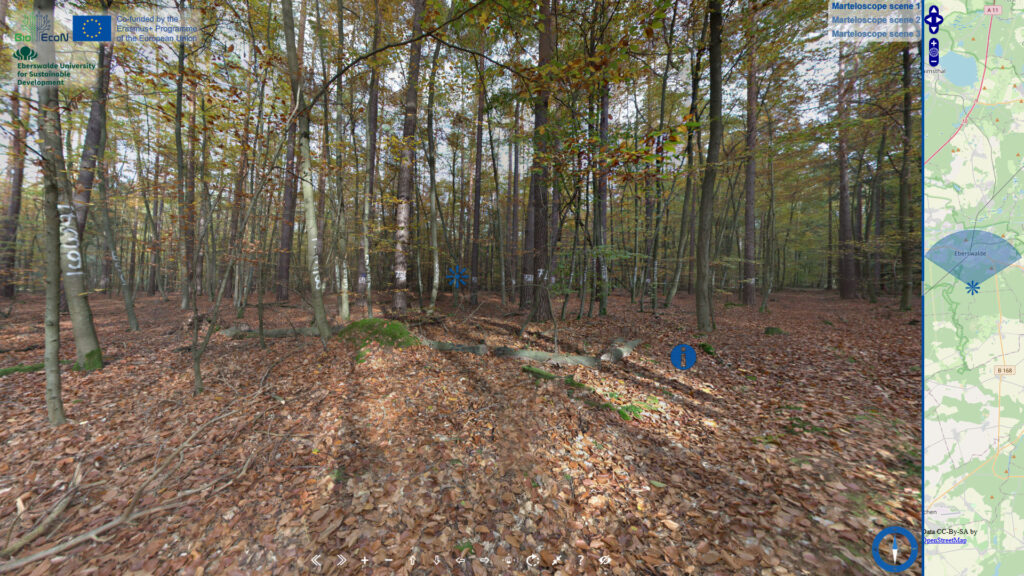HNEE students Torben Föhrder and Lina Wernicke from Eberswalde University for Sustainable Development produced a 360 degree virtual tour of the Marteloscope in Eberswalde. (Thank you for cooperation with Prof. Spathelf und supervision from Prof. Guericke) .
A Marteloscope is a permanent plot within the forest in which tree measurements and associated software are linked to provide a framework for in-forest training in selection and marking. Marteloscopes have been developed in France so the name derives from the French word “martelage” which means tree selection and the Greek word “skopein” meaning to watch. Marteloscopes are useful for forestry-related educational programs and training purposes. A Marteloscope is a place where students, forest professionals, scientists and conservationists can discuss and sample different management scenarios for the Marteloscope.

A martelopscope consists of a 1-hectare rectangular plot divided in 16 subplots of 25×25 m (numbered from 1 to 16) in which, at least, the species, height and diameter at breast height of every tree are measured and recorded. Based on these measures, its basal area and volume are calculated. Each subplot is marked with wooden or metal stakes on the floor. The location of each of the trees is mapped and each tree is labelled with an identifying number.
Marteloscopes can be considered outdoor classrooms where students can analyse biometric and environmental parameters of the stand and simulate management prescriptions via a mobile device, while maintaining a tangible connection to the living forest. This provides an appealing didactical tool supplementing both field- and classroom-based learning which is not limited by geography or weather conditions. The plethora of possible outcomes resulting from simulated management applications facilitates critical thinking and opportunities for discussion.
Learning with marteloscopes can be further enhanced using virtual forest tours. A virtual forest tour is a 360° * 180° panoramic picture consisting of 40 to 75 individual frames. A student can get an impression of a marteloscope before visiting the site, or even investigate and compare distant marteloscope sites. Virtual forest tours can contain educational videos or supplemental information such as pictures of microhabitats or forest plants, soil characteristics, etc.
This martelopscope site is scientifically supervised by Prof. Dr. Martin Guericke of HNEE and the Integrate+ project.